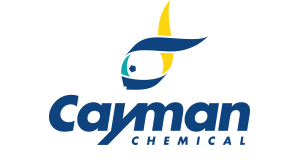(±)17(18)-EpETE
(±)17(18)-EpETE
SKU
CAY50861-50
Packaging Unit
50 µg
Manufacturer
Cayman Chemical
Availability:
loading...
Price is loading...
Shelf life (days): 730.0
Formulation: A solution in ethanol
Formal Name: (±)17,18-epoxy-5Z,8Z,11Z,14Z-eicosatetraenoic acid
Purity: ≥90%
Formula Markup: C20H30O3
Formula Weight: 318.5
Notes: (±)17(18)-EpETE is an active metabolite of the ω-3 fatty acid eicosapentaenoic acid (EPA; Item Nos. 90110 / 90110.1 / 21908) formed via epoxidation of the 17,18 double bond by the cytochrome P450 (CYP) isoform CYP1A2 and an agonist of sphingosine-1-phosphate receptor 1 (S1P1).{69933,69934} It binds to S1P1 (Ki = 0.57 nM) and activates S1P1 in a bioluminescence resonance energy transfer (BRET) assay using HEK293T cells expressing human S1P1 (EC50 = 8.93).{69933} (±)17(18)-EpETE (100 nM) also increases outward potassium efflux in rat vascular smooth muscle cells expressing large-conductance calcium-activated potassium channels (KCa1.1/BK).{9825} It inhibits oscillatory shear stress- or TNF-α-induced increases in vascular cell adhesion molecule-1 (VCAM1) levels in human umbilical vein endothelial cells (HUVECs) in a concentration-dependent manner.{69933} (±)17(18)-EpETE (1 µM) increases levels of phosphorylated endothelial nitric oxide synthase (eNOS), as well as prevents TNF-α-induced increases in levels of IκBα and phosphorylated levels of IKKα and p65 in HUVECs. In vivo, (±)17(18)-EpETE decreases tissue levels of VCAM1 and intracellular adhesion molecule-1 (ICAM1) and reduces the number of atherosclerotic lesions in the carotid arteries of wild-type but not S1pr1-/- mice in a model of atherosclerosis induced by arterial ligation and the Pcsk9 mutant Pcsk9N377Y.
Formulation: A solution in ethanol
Formal Name: (±)17,18-epoxy-5Z,8Z,11Z,14Z-eicosatetraenoic acid
Purity: ≥90%
Formula Markup: C20H30O3
Formula Weight: 318.5
Notes: (±)17(18)-EpETE is an active metabolite of the ω-3 fatty acid eicosapentaenoic acid (EPA; Item Nos. 90110 / 90110.1 / 21908) formed via epoxidation of the 17,18 double bond by the cytochrome P450 (CYP) isoform CYP1A2 and an agonist of sphingosine-1-phosphate receptor 1 (S1P1).{69933,69934} It binds to S1P1 (Ki = 0.57 nM) and activates S1P1 in a bioluminescence resonance energy transfer (BRET) assay using HEK293T cells expressing human S1P1 (EC50 = 8.93).{69933} (±)17(18)-EpETE (100 nM) also increases outward potassium efflux in rat vascular smooth muscle cells expressing large-conductance calcium-activated potassium channels (KCa1.1/BK).{9825} It inhibits oscillatory shear stress- or TNF-α-induced increases in vascular cell adhesion molecule-1 (VCAM1) levels in human umbilical vein endothelial cells (HUVECs) in a concentration-dependent manner.{69933} (±)17(18)-EpETE (1 µM) increases levels of phosphorylated endothelial nitric oxide synthase (eNOS), as well as prevents TNF-α-induced increases in levels of IκBα and phosphorylated levels of IKKα and p65 in HUVECs. In vivo, (±)17(18)-EpETE decreases tissue levels of VCAM1 and intracellular adhesion molecule-1 (ICAM1) and reduces the number of atherosclerotic lesions in the carotid arteries of wild-type but not S1pr1-/- mice in a model of atherosclerosis induced by arterial ligation and the Pcsk9 mutant Pcsk9N377Y.

 Deutsch
Deutsch










